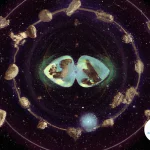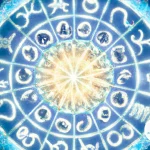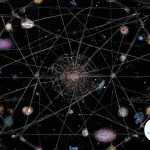The Mystical Connection: Unveiling the Importance of Lunar Phases in Your Monthly Forecast
Have you ever wondered how the different phases of the Moon affect your life? The Moon, with its ever-changing appearance, captivates us with its enigmatic beauty. But did you know that these lunar phases hold a profound significance in astrology? In this article, we will explore the magical world of lunar phases and uncover their crucial role in shaping your monthly forecast. From the New Moon to the Waxing Crescent, the Full Moon to the Waning Crescent, each phase has its own unique energy that influences our emotions, intentions, and personal growth. Join us on this captivating journey as we delve into the depths of the lunar cycle and discover how to interpret and incorporate these mystical phases into your monthly horoscope.
Understanding Lunar Phases
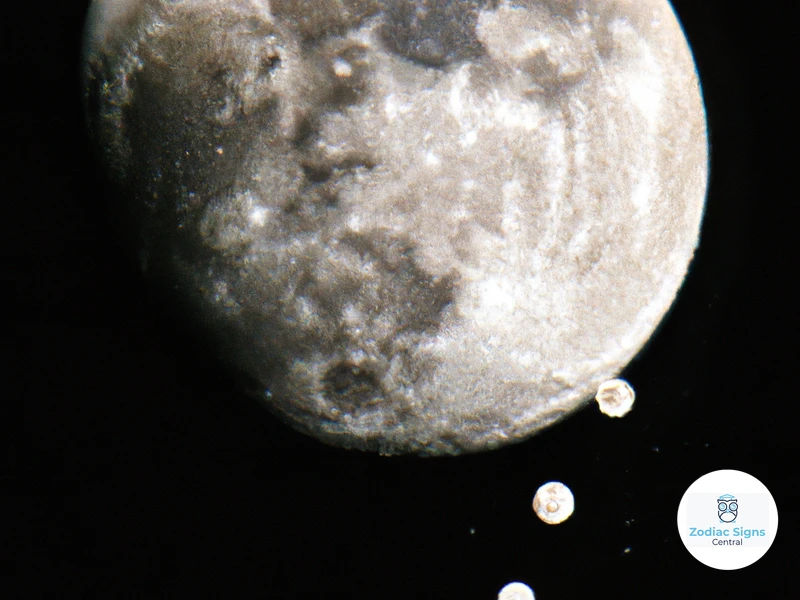
Lunar phases refer to the different stages the Moon goes through as it orbits around the Earth. These phases are a result of the changing positions of the Sun, Moon, and Earth, creating varying amounts of sunlight that illuminate the Moon. As a result, the Moon appears differently to us on Earth, and these distinct appearances are known as lunar phases.
There are a total of eight main lunar phases: New Moon, Waxing Crescent, First Quarter, Waxing Gibbous, Full Moon, Waning Gibbous, Third Quarter, and Waning Crescent. These phases occur in a specific order, with each phase representing a particular amount of the Moon that is visible from Earth. The New Moon, for example, appears completely dark, while the Full Moon is fully illuminated.
In astrology, lunar phases play a significant role in understanding and interpreting celestial energies. As the Moon progresses through its phases, it influences our emotions, energy levels, and overall spiritual well-being. Each phase carries its unique qualities that can enhance or challenge different aspects of our lives. For example, during the New Moon, it is a time for new beginnings, setting intentions, and planting seeds for the future. On the other hand, the Full Moon brings about a culmination of energy, illuminating what needs to be released or celebrated in our lives. Understanding these lunar phases allows us to align with the natural rhythms of the universe, harnessing their power to navigate and enhance our personal growth and self-awareness.
What are Lunar Phases?
Lunar phases are the different stages the Moon goes through as it orbits around the Earth. These phases are a result of the Moon’s positioning with respect to the Sun and Earth. They are characterized by the varying amounts of sunlight that illuminate different parts of the Moon. The Moon appears differently to us on Earth depending on which portion is lit up by the Sun’s rays, resulting in the different lunar phases we observe.
During a New Moon, the Moon is positioned between the Earth and the Sun, with the sunlit side of the Moon facing away from us. This phase appears completely dark to us since there is no sunlight reflecting off the Moon towards Earth. As the Moon continues its orbital journey, a thin crescent of light becomes visible, marking the Waxing Crescent phase. The illuminated portion of the Moon gradually expands, reaching the First Quarter phase when it is exactly half illuminated. The Waxing Gibbous phase follows, where the Moon is more than half illuminated but not yet fully lit.
At the peak of the lunar cycle is the Full Moon, where the Moon is completely illuminated, presenting a majestic and awe-inspiring sight. It is during the Full Moon that the Moon is directly opposite the Sun, allowing us to see its entire face. After the Full Moon, the illuminated portion begins to decrease, entering the Waning Gibbous phase and then the Third Quarter phase, where half the Moon is once again illuminated. The illumination continues to diminish until reaching the Waning Crescent phase, where only a thin crescent of light remains.
Lastly, before beginning a new lunar cycle, we have the Dark Moon phase, also known as the New Moon. This phase represents the transitionary period where the Moon is not visible from Earth as it aligns with the Sun and begins its new cycle. It serves as a time of introspection, renewal, and preparation for the upcoming lunar phases.
Understanding these different lunar phases is key to harnessing the energies they represent and incorporating them into our lives. Whether it’s setting intentions during the New Moon, releasing and letting go during the Waning phases, or celebrating achievements during the Full Moon, each lunar phase offers a unique opportunity to align with the natural rhythms of the cosmos and enhance our connection to the world around us.
The Different Lunar Phases
The lunar phases have a mesmerizing effect, each offering a unique energy and influence on our lives. Let’s explore each phase in detail:
1. New Moon: The New Moon marks the beginning of the lunar cycle when the Moon is completely dark and not visible from Earth. It is a time for new beginnings, setting intentions, and planting seeds for the future. This phase encourages us to reflect, release what no longer serves us, and pave the way for new opportunities.
2. Waxing Crescent: As the Moon begins to wax, a small crescent shape starts to appear. This phase symbolizes growth, hope, and perseverance. It is a time to take action on our intentions, nurture our goals, and make progress towards manifesting our desires.
3. First Quarter: During the First Quarter phase, half of the Moon is visible, resembling a half-circle shape. This phase brings a burst of energy and challenges us to overcome obstacles. It is a time to refine our plans, make adjustments, and find balance between our intentions and the practical steps needed to achieve them.
4. Waxing Gibbous: As the Moon continues to wax, it becomes almost fully illuminated, with only a small sliver of darkness. This phase amplifies our efforts and reinforces our commitment to our goals. It is a time for persistence, focus, and preparation as we approach the culmination of our intentions.
5. Full Moon: The Full Moon is a captivating sight, illuminating the night sky with its radiant glow. It represents completion, culmination, and heightened emotions. This phase enhances our intuition, facilitates deep introspection, and brings to light what needs to be acknowledged and released. The Full Moon often serves as a powerful time for manifestation and transformation.
6. Waning Gibbous: As the Moon begins to wane, it transitions from being fully illuminated to gradually decreasing in brightness. This phase encourages us to let go of what no longer serves us, release attachments, and surrender control. It is a time for reflection, gratitude, and forgiveness.
7. Third Quarter: During the Third Quarter phase, half of the Moon is visible again, but in the opposite direction compared to the First Quarter. This phase prompts us to assess our progress, reflect on lessons learned, and make any necessary adjustments before moving forward. It is a time for introspection and self-evaluation.
8. Waning Crescent: The waning crescent phase represents transition, release, and surrender. The Moon appears as a small crescent shape, signaling the winding down of the lunar cycle. It is a time for deep healing, introspection, and preparation as we approach the upcoming New Moon.
Understanding the different lunar phases provides us with valuable insights into the ebb and flow of energy in our lives. By aligning our intentions and actions with the lunar cycle, we can harness the cosmic energies to manifest our desires, find emotional balance, and enhance our spiritual growth.
How Lunar Phases Affect Astrology
Lunar phases play a crucial role in astrology by influencing the energetic vibrations that surround us. The Moon governs our emotions, intuition, and subconscious mind, making it a significant factor in astrological interpretations. Each lunar phase carries a unique energy that can either amplify or temper the influence of other celestial bodies.
When the Moon is in the New Moon phase, it represents a time of new beginnings and fresh starts. It is an opportune moment to set intentions and lay the groundwork for future endeavors. Astrologers often focus on the placement of the New Moon in a specific zodiac sign to determine the areas of life that will be most affected during this time. For example, a New Moon in Taurus may emphasize matters related to stability, material possessions, and sensual pleasures.
As the Moon progresses into the Waxing Crescent phase, its energy gradually increases, and we may feel a surge of motivation and enthusiasm. This phase is associated with growth, expansion, and taking action towards our goals. It is a time for building momentum and moving forward with our plans. Astrologically, the Waxing Crescent phase can be a period of increased opportunities and breakthroughs, where we gain clarity on the steps we need to take to manifest our desires.
The First Quarter phase marks a halfway point between the New Moon and the Full Moon. It is a time of challenges and decision-making. The energy of this phase can be intense and dynamic, pushing us to overcome obstacles and find creative solutions. It is a period of growth and self-reflection, where we may need to make adjustments or reassess our approach. Astrologically, the First Quarter phase encourages us to take decisive action and find balance between our desires and responsibilities.
The Waxing Gibbous phase follows the First Quarter and represents a stage of refinement and preparation. It is a time for fine-tuning our plans and ensuring that everything is in place before reaching the peak energy of the Full Moon. This phase encourages us to analyze our progress, make necessary adjustments, and focus on the details. Astrologically, the Waxing Gibbous phase can highlight areas where we need to be more methodical and organized in our pursuits.
The Full Moon phase signifies the peak energy of the lunar cycle. It represents a time of heightened emotions, illumination, and release. Astrologers pay close attention to the zodiac sign in which the Full Moon occurs, as it provides insights into the areas of life that may come to fruition or require closure. The Full Moon often brings clarity, shining a light on hidden truths and unresolved issues. It is a powerful time for manifestation, healing, and letting go of what no longer serves us.
The subsequent phases, including the Waning Gibbous, Third Quarter, and Waning Crescent, continue to influence our emotions and experiences. They offer opportunities for reflection, releasing what is no longer needed, and preparing for the next cycle. Each of these phases carries its own energy and significance in astrological readings, providing valuable insights into our personal journeys and growth.
By understanding how lunar phases affect astrology, we can gain a deeper appreciation for the cyclical nature of life and tap into the cosmic forces that shape our experiences. Incorporating lunar phase interpretations into our monthly forecasts can enhance our self-awareness, decision-making, and spiritual connection. Astrology, combined with the magic of lunar cycles, offers a powerful tool for navigating our lives with intention and purpose.
Interpreting Lunar Phases in Your Monthly Forecast
During the New Moon phase, the Moon is positioned between the Earth and the Sun, with its dark side facing us. This phase marks the beginning of the lunar cycle, and it symbolizes a fresh start and new opportunities. It is a time for setting intentions, initiating projects, and planting the seeds of your desires. The energy of the New Moon encourages us to focus on self-reflection, inner work, and clarifying our goals for the upcoming month. As the darkness gradually transitions into light, visualize the manifestation of your dreams and embrace the potential for growth and transformation.
Following the New Moon, the Waxing Crescent phase begins. During this phase, a small sliver of the moon becomes visible, growing larger each night. The energy during this time is favorable for taking action, making connections, and building momentum towards your goals. It is a period of growth, creativity, and learning. This is an excellent time to start new projects, develop new skills, or connect with like-minded individuals who can support your journey. Use this phase to cultivate a positive mindset, seek inspiration, and expand your possibilities.
The First Quarter is a significant phase as it represents a turning point in the lunar cycle. At this stage, half of the Moon is visible, resembling a half-circle. This phase brings a sense of urgency and a push to overcome obstacles or challenges that may arise. It encourages taking action, making decisions, and moving forward with determination. This is a time to evaluate your progress, adjust your course if necessary, and embrace the challenges that come your way. The First Quarter phase reminds us to stay focused, persevere, and stay true to our intentions.
As the Moon continues to grow, it enters the Waxing Gibbous phase. During this period, the Moon appears more than half illuminated, but not yet fully illuminated like during the Full Moon phase. This phase represents refinement and fine-tuning of our goals and projects. It is a time for reviewing our progress, making necessary adjustments, and focusing on the details. The energy of the Waxing Gibbous phase encourages us to stay committed, dedicated, and disciplined in our pursuits. It is a phase of preparation for the peak that is yet to come.
The Full Moon is perhaps the most captivating and well-known lunar phase. It occurs when the Moon appears fully illuminated, with its entire surface visible from Earth. The energy during this phase is potent, intense, and transformative. It is a time of heightened emotions, deep insights, and a release of built-up energy. The Full Moon illuminates aspects of our lives that may need attention, bringing clarity and awareness. This phase is ideal for letting go of what no longer serves us, releasing old patterns, and celebrating our achievements. Embrace the healing and transformative powers of the Full Moon, and allow its energy to guide you towards emotional balance and spiritual growth. resselessness can hit their peak during this phase. Take time for introspection, meditation, or gentle activities that help you stay grounded and calm.
After the Full Moon, as the lunar cycle progresses, the Moon enters the Waning Gibbous phase. During this phase, the Moon starts to shrink, with less than a full illumination remaining visible. The energy during this phase is reflective and introspective. It is a time for evaluating the lessons learned during the previous weeks and integrating them into our lives. This phase prompts us to assess our progress, let go of anything that no longer aligns with our intentions, and release any remaining emotional baggage. Use this phase to declutter your mind, nurture self-care practices, and focus on self-improvement.
The Third Quarter phase represents a shift towards closure as the Moon reaches its halfway point between the Full Moon and the next New Moon. During this phase, the Moon appears half-illuminated, but the illuminated part is opposite to what it was during the First Quarter phase. This is a time for reflection, introspection, and releasing anything that is holding us back. It offers an opportunity to let go of limiting beliefs, negative patterns, or stagnant energy that no longer serves our growth. Embrace the transformative power of the Third Quarter phase and trust in the process of releasing and surrendering.
As the lunar cycle nears its end, the Moon enters the Waning Crescent phase. During this phase, only a small crescent of the Moon is visible, marking the final days before the next New Moon. The energy during this phase is gentle, subtle, and introspective. It is a time for rest, reflection, and quiet contemplation. Focus on self-care, nurturing your soul, and preparing for the next cycle. Allow yourself to recharge, restore your energy, and set intentions for the upcoming lunar cycle. Embrace this phase as a period of spiritual renewal, inner healing, and deep connection with your intuition.
The Dark Moon represents the period just before the arrival of the next New Moon. During this phase, the Moon appears completely dark and is not visible in the sky. It is a moment of stillness, silence, and cosmic potential. The energy during the Dark Moon is profound, mysterious, and fertile. It is a time for deep introspection, meditation, and connecting with your inner wisdom. This phase offers an opportunity for inner healing, cleansing, and purification. Embrace the magic of the Dark Moon and allow yourself to surrender to the unknown, trusting in the divine timing of the universe. Use this phase to rest, recharge, and set powerful intentions for the new lunar cycle that lies ahead.
Interpreting the lunar phases in your monthly forecast allows you to tap into the powerful energies of the Moon, aligning yourself with the natural rhythms of the universe. By understanding how each phase influences your emotions, energy levels, and spiritual growth, you can navigate through life with greater awareness and intentionality. Incorporate these interpretations into your monthly horoscope, and witness the profound impact it has on your journey of self-discovery and personal transformation. Remember to stay open to the mystical energies of the Moon and let it guide you on your path to spiritual awakening and fulfillment.
1. New Moon
The New Moon represents the beginning of the lunar cycle when the Moon is completely dark and not visible from Earth. This phase signifies a time of new beginnings, fresh starts, and the planting of seeds for the future. It is a potent time to set intentions, initiate projects, and embark on a new chapter in your life. The energy of the New Moon encourages introspection, self-reflection, and creating space for growth and transformation. It is a time to identify what you want to manifest in your life and take the necessary steps to make it a reality. This phase is associated with rebirth and holds tremendous potential for personal and spiritual development.
During the New Moon, it is essential to take the time to connect with your inner self, assess your desires and goals, and visualize what you want to manifest in the coming month. Setting clear and specific intentions during this phase allows you to align your energy with the cosmic forces at play. Additionally, journaling, meditating, and engaging in practices such as visualization or affirmations can amplify the manifestation process during the New Moon.
In astrology, the New Moon holds specific significance based on the zodiac sign it occurs in. Each zodiac sign brings its unique qualities and energies, influencing the themes and areas of life that are most activated during this phase. For example, a New Moon in Taurus may prioritize stability, abundance, and material manifestation, while a New Moon in Cancer may focus more on emotional well-being, family connections, and nurturing oneself. Understanding the zodiac sign in which the New Moon falls can provide valuable insights into the areas of your life that may be particularly influenced and where you can direct your intentions.
To incorporate the energy of the New Moon into your monthly forecast, pay attention to the astrological house that the New Moon falls in within your birth chart. This house represents the area of life that will be most activated and where you can direct your energies during the month ahead. By understanding the qualities and themes associated with the New Moon in that specific house, you can tailor your intentions and actions to align with those energies. For example, if the New Moon falls in your 2nd house, which represents finances and self-worth, you can focus your intentions on attracting abundance and prosperity in your financial endeavors.
Embrace the transformative power of the New Moon and leverage its energy to embark on new beginnings and manifest your desires. By honoring the New Moon phase in your monthly forecast, you can align with the natural cycles of the universe, harnessing its potential for growth, manifestation, and self-discovery.
2. Waxing Crescent
The Waxing Crescent is the second phase of the lunar cycle and occurs right after the New Moon. During this phase, a small, crescent-shaped sliver of the Moon becomes visible in the sky. It symbolizes a time of growth and progress as the Moon appears to be getting larger each day. The Waxing Crescent phase holds a sense of anticipation and potential, making it an excellent time for setting intentions and taking the initial steps towards manifesting your desires.
In astrology, the Waxing Crescent phase is associated with new beginnings, fresh ideas, and emerging opportunities. This is an ideal time to start new projects, embark on personal growth journeys, or explore creative pursuits. The energy is ripe with enthusiasm, and the cosmos supports you in moving forward on your path. It is a time for self-reflection, visualizing your goals, and taking practical actions to bring them into reality.
During the Waxing Crescent phase, it is essential to focus on nurturing your intentions and maintaining a positive mindset. The energy of this phase encourages optimism and a willingness to explore uncharted territory. It is a time to trust the process and have faith that your intentions will bear fruit. Embrace the energy of growth and utilize the Waxing Crescent phase to align your actions with your desires.
Incorporating practices such as journaling, visualization, or meditation can be especially powerful during this phase. Take the time to clarify your intentions, write down your goals, and visualize yourself already embodying them. This will help reinforce your focus and draw in the necessary energies to manifest your dreams.
Remember, each lunar phase has its unique energy and purpose. Understanding and attuning yourself to the Waxing Crescent phase allows you to navigate its powerful energy and align with the unfolding opportunities that lie ahead. Embrace the growth and potential that this phase brings, and watch as your intentions begin to take shape.
3. First Quarter
During the First Quarter phase, the Moon is halfway between the New Moon and the Full Moon. This phase marks a turning point in the lunar cycle, where the Moon is waxing and transitioning from darkness to light. The First Quarter phase is characterized by a half-illuminated Moon, appearing as a half-circle in the sky.
In astrology, the First Quarter phase symbolizes a time of challenges, action, and decision-making. It is a period of growth and momentum, where we may encounter obstacles or conflicts that test our determination and commitment to our goals. The energy during this phase is dynamic and purposeful, urging us to take action and make progress towards our intentions set during the New Moon. It is a time to assess our progress, make necessary adjustments, and face any obstacles head-on.
The First Quarter phase encourages us to find balance and seek solutions to any challenges we may encounter. It is a period of increased motivation and drive, pushing us to step out of our comfort zones and overcome any limitations. This phase calls for proactive decision-making and taking the necessary steps towards manifesting our desires and intentions.
To make the most out of the First Quarter phase, it is essential to assess our goals, re-evaluate our strategies, and take the necessary actions. This phase offers an opportunity for growth and progress, but it requires determination and perseverance. By embracing the energy of the First Quarter phase and aligning our actions with our intentions, we can navigate through challenges and move closer to manifesting our dreams and desires.
4. Waxing Gibbous
During the Waxing Gibbous phase, the Moon continues to grow in illumination and appears more than half illuminated but not yet fully illuminated like during a Full Moon. This stage occurs after the First Quarter and before the Full Moon. The Waxing Gibbous phase is a time of building energy and momentum. It represents a period of progress and growth, where our goals and intentions gain strength and move closer to fruition. It is a time of dedication and focused effort towards our desires, as we strive to manifest our intentions into reality. This phase encourages us to take action and make necessary adjustments to align ourselves with our goals. It is a crucial time to stay motivated and persevere, as the energy of the Waxing Gibbous phase supports progress and forward movement. Reflect on the intentions set during the New Moon and reassess your progress, making any necessary tweaks to your plans to ensure success. Take advantage of the Waxing Gibbous energy by remaining focused, determined, and open to opportunities that come your way. If you want to explore how this phase can impact your financial goals, check out our article on astro-wealth and prosperity.
5. Full Moon
During the Full Moon phase, the Moon is fully illuminated and appears as a perfect circle in the night sky. This phase symbolizes a peak of energy and brings about a sense of completion and heightened emotions. The Full Moon is a time of culmination and manifestation, where the intentions set during the New Moon start to come to fruition. It is a time of heightened intuition and increased sensitivity, making it an ideal period for introspection and self-reflection.
The energy of the Full Moon is potent and can have a profound impact on our emotions and relationships. It acts as a mirror, illuminating both our strengths and weaknesses. This heightened emotional state can bring about a deep sense of clarity and self-awareness. It is a time to celebrate achievements, acknowledge personal growth, and express gratitude for the abundance in our lives.
While the Full Moon represents a time of culmination, it also encourages us to release what no longer serves us. It brings to light any emotional blockages or unresolved issues, pushing us to confront them and let go. As the illuminating light of the Full Moon shines upon us, we are encouraged to release negative thought patterns, harmful behaviors, and toxic relationships. By embracing the transformative energy of the Full Moon, we can clear the path for new opportunities and personal growth.
In astrology, the Full Moon is a time of heightened energy and intensity. It is a time when emotions may run high, and relationships may be tested. It is essential to stay grounded and emotionally balanced during this period. Self-care practices such as meditation, journaling, and connecting with nature can help harness the powerful energy of the Full Moon and channel it into positive and transformative experiences.
The Full Moon is a significant phase in the lunar cycle. It serves as a reminder of our connection to the cosmos and our ability to manifest our desires. Embrace the energy of the Full Moon, celebrate your achievements, release what no longer serves you, and allow the transformative power of this phase to guide you on your journey of self-discovery and personal growth.
6. Waning Gibbous
During the phase of Waning Gibbous, the Moon is past the Full Moon and heading towards the Third Quarter. It appears to be more than half illuminated, but less than fully illuminated. This phase symbolizes a time of reflection, releasing, and surrendering. It is a period when we begin to let go of what no longer serves us and embrace the process of closure and completion.
In astrology, the Waning Gibbous phase encourages us to evaluate our experiences and learn from them. It is a time to reflect on our actions, assess any challenges or obstacles we may have faced, and seek the wisdom and lessons hidden within. This phase prompts us to release any emotional baggage or negative patterns that hinder our growth and well-being.
During the Waning Gibbous, it is common to feel a drop in energy levels, as this phase signals the winding down of the lunar cycle. It is a time to rest, recharge, and prepare for the upcoming Third Quarter phase. This phase also supports introspection, self-analysis, and inner healing. It encourages us to connect with our intuition, engage in spiritual practices, and focus on self-care. By taking the time to nurture and rejuvenate ourselves, we can find clarity, insight, and balance.
The energy of the Waning Gibbous phase can influence various aspects of our lives, including our relationships, career, and personal well-being. In relationships, it encourages open and honest communication, forgiveness, and letting go of past grievances. Career-wise, it urges us to assess our professional goals, make any necessary adjustments, and tie up loose ends. Emotionally, this phase can bring up unresolved issues, prompting us to address them and seek closure.
The Waning Gibbous phase is a time of releasing, healing, and preparing for the next phase of the lunar cycle. Embrace this period of introspection and growth, allowing yourself to embrace change and transform as you move towards the Third Quarter. Remember to be gentle with yourself and trust the natural rhythm of the Moon’s influence in your life.
7. Third Quarter
7. Third Quarter: Reflection and Reassessment
The Third Quarter is an important phase in the lunar cycle, representing reflection and reassessment. It occurs when the Moon is three-quarters illuminated and appears as a half-circle in the sky. This phase signifies a shift in energy as we enter the waning or decreasing phase of the Moon.
During the Third Quarter, we are encouraged to reflect on the progress we have made since the New Moon and evaluate our goals and intentions. It is a time for introspection and self-analysis, allowing us to assess what is working and what needs adjustment in our lives. This phase urges us to let go of anything that no longer serves our highest good and make room for new opportunities.
In astrology, the Third Quarter is associated with the zodiac sign Cancer. Cancer is known for its emotional sensitivity and nurturing qualities. During this phase, it is essential to pay attention to our emotional well-being and address any issues related to family dynamics or communication. This could be a time to mend relationships, seek forgiveness, or open up channels of better understanding.
To navigate the energy of the Third Quarter, it is helpful to engage in self-reflection practices such as journaling, meditation, or seeking therapy. These activities can provide clarity and insight into the areas of our lives that require attention and growth. By addressing emotional blocks and fostering healthy communication, we can create a solid foundation for personal and interpersonal transformation.
As the Moon continues its journey through the lunar phases, the Third Quarter prepares us for the upcoming waning crescent phase and the opportunity to release, heal, and prepare for the next lunar cycle. Embrace this time of introspection and use it as a stepping stone towards personal growth and emotional fulfillment.
8. Waning Crescent
The Waning Crescent phase marks the final stage of the lunar cycle before the New Moon. During this phase, the Moon appears as a slim crescent, with only a small portion illuminated. It holds a reflective and introspective energy, encouraging us to turn inward and release what no longer serves us. The Waning Crescent is a powerful time for deep healing, letting go of old patterns, and clearing space for new beginnings to emerge.
In astrology, the Waning Crescent phase is associated with surrender and closure. It is a time to reflect on the lessons learned throughout the lunar cycle and to release any attachments or emotional baggage. This is an opportunity to engage in self-reflection and allow ourselves to heal and transform. It is a moment for introspection, forgiveness, and self-care.
During this phase, it is beneficial to focus on rest, relaxation, and self-nurturing practices. Take time to engage in activities that promote emotional and spiritual well-being such as meditation, journaling, or gentle exercise. This is also an excellent time to let go of any negative emotions or thoughts that may be holding you back. By releasing these burdens, you free up space for new energies and experiences to enter your life.
The Waning Crescent phase urges us to take an inventory of our lives and make peace with the past. Use this opportunity to reflect on your personal growth, set intentions for the upcoming lunar cycle, and prepare yourself mentally and emotionally for the fresh start that the New Moon heralds. Take time to reconnect with your inner self, practice self-compassion, and engage in activities that rejuvenate your spirit. Embrace the transformative energy of the Waning Crescent and allow it to guide you on the path of healing and renewal.
9. The Dark Moon
The Dark Moon, also known as the Balsamic Moon, is the final phase of the lunar cycle before the New Moon. During this phase, the Moon is barely visible in the sky, appearing as a sliver of darkness. The energy of the Dark Moon is introspective and introspective, encouraging us to retreat from the external world and delve deeper into our inner selves.
In astrology, the Dark Moon represents a time of reflection, release, and surrender. It is a period for self-examination and letting go of anything that no longer serves us. This phase is particularly potent for shedding old patterns, beliefs, and behaviors that hinder our growth and progress. It offers an opportunity to heal and make space for new beginnings and fresh perspectives.
During the Dark Moon, it is important to take time for solitude and self-care. Engage in activities that nourish your soul, such as journaling, meditating, or engaging in creative pursuits. This phase is ideal for introspection, setting intentions, and preparing for the upcoming cycle. It’s a powerful time to release emotional baggage, heal past wounds, and embrace renewal.
The Dark Moon’s energy can also influence our dreams and intuition, making it a pivotal time for spiritual exploration and inner guidance. Pay attention to your dreams during this phase, as they may hold valuable messages and insights. Trust your intuition and allow it to guide you towards the wisdom and clarity needed for your personal growth.
Incorporating the significance of the Dark Moon in your monthly horoscope can help you navigate the natural ebbs and flows of life. Embrace this phase as a time for introspection and renewal, and harness its transformative energy to release what no longer serves you and make space for new beginnings.
Incorporating Lunar Phases in Your Monthly Horoscope

Incorporating lunar phases in your monthly horoscope can provide deeper insights into the energies and themes that will prevail during different periods of the month. By understanding and acknowledging the influence of each lunar phase, astrologers can create forecasts that align with the cosmic rhythms. Let’s explore two ways to incorporate lunar phases into your monthly horoscope.
1. Sun-Moon Alignment: The Sun-Moon alignment is a crucial aspect to consider when interpreting lunar phases in your monthly horoscope. It involves assessing the position of the Sun and Moon in relation to each other to understand their combined influence. For example, during the New Moon phase, when the Sun and Moon are aligned, it is a time of new beginnings and fresh starts. Similarly, during the Full Moon phase, when the Sun and Moon are in opposition, there is a sense of culmination and manifestation. By assessing the Sun-Moon alignment, astrologers can provide more accurate and personalized predictions for each lunar phase in your monthly forecast.
2. Eclipse Energies: Eclipses are powerful celestial events that occur when the Sun, Moon, and Earth align in a specific way. They have a profound impact on our lives and can signal significant beginnings or endings. Incorporating eclipse energies into your monthly horoscope adds an extra layer of depth and intensity. During solar eclipses, the Sun is temporarily obscured, aligning with the New Moon phase and signaling a time for new beginnings and transformative changes. Lunar eclipses, on the other hand, occur during the Full Moon phase when the Moon is temporarily obscured. They symbolize emotional revelations, letting go of what no longer serves us, and embracing inner transformation. By considering the influence of eclipse energies, astrologers can provide more nuanced and accurate predictions in your monthly horoscope.
By incorporating lunar phases, Sun-Moon alignments, and eclipse energies into your monthly horoscope, you can gain a deeper understanding of the cosmic influences that will shape your experiences during specific periods. This awareness allows you to navigate these energies consciously and make the most of the opportunities for growth, healing, and self-discovery that each lunar phase brings.
1. Sun-Moon Alignment
The Sun-Moon alignment refers to the relationship and positioning of the Sun and Moon in the astrological chart. This alignment holds great significance in astrology as it sheds light on the personal energies and dynamics at play in our lives. When the Sun and Moon are in harmonious alignment, it signifies a sense of balance and integration within ourselves. This alignment symbolizes a time of alignment between our conscious desires and our deeper emotional needs. It is a period when we can harness the power of both the Sun and Moon to manifest our intentions, make important decisions, and pursue our goals with clarity and confidence. Conversely, when the Sun and Moon are in conflicting alignment, it can create inner tension and challenges in finding harmony between our conscious and subconscious selves. It is a time for self-reflection, introspection, and finding ways to reconcile these opposing energies. By understanding the Sun-Moon alignment in our monthly forecast, we can gain valuable insights into our emotional landscape and navigate the energies with greater self-awareness and adaptability. This awareness can help us make conscious choices and take appropriate actions to support our overall well-being and personal growth. So, take a moment to observe the Sun-Moon alignment in your horoscope and discover the hidden treasures that lie within this celestial dance.
2. Eclipse Energies
Eclipses are powerful celestial events that occur when the Sun, Moon, and Earth align in a specific way. During a solar eclipse, the Moon passes between the Earth and the Sun, blocking the Sun’s light temporarily. In contrast, during a lunar eclipse, the Earth comes between the Sun and the Moon, casting a shadow on the lunar surface. These cosmic phenomena create a surge of intense energy and bring about transformative effects in our lives.
The energies of eclipses are known to be potent and can have a profound impact on our consciousness and emotions. They symbolize times of profound change, release, and rebirth. Eclipses often act as catalysts for personal and collective transformations, as they bring hidden emotions, patterns, and issues to the surface for us to confront and resolve.
In astrology, the positioning and influence of eclipses in our birth charts can offer valuable insights into the areas of our lives that are primed for significant shifts and breakthroughs. For example, a solar eclipse in your career sector may indicate an upcoming change or new opportunity in your professional life. Similarly, a lunar eclipse in your family or relationship sector could signify a period of emotional healing and transformation within your personal connections.
During an eclipse, it is essential to pay attention to the messages and lessons that arise. It is a time of heightened intuition and cosmic downloads, making it an excellent opportunity for spiritual growth and self-reflection. By embracing the energies of eclipses and working with their transformative potential, we can navigate these periods of change with grace and align ourselves with our higher purpose.
Conclusion
In conclusion, exploring the significance of lunar phases in your monthly forecast can provide valuable insights into the ebb and flow of energy in your life. By understanding the different lunar phases and how they correspond to various astrological influences, you can better navigate the different aspects of your life, harnessing the power of each phase to manifest your intentions and release what no longer serves you. Incorporating lunar phases in your monthly horoscope allows you to tap into cosmic energies and align with the natural rhythms of the universe, enhancing your self-awareness and personal growth. So, the next time you check your monthly forecast, take a moment to consider the lunar phases and their impact on your journey. Remember, the Moon’s energy is a powerful tool that can guide and support you in your quest for self-discovery and fulfillment. Embrace the magic of the lunar cycle and unlock the potential that lies within.
Frequently Asked Questions
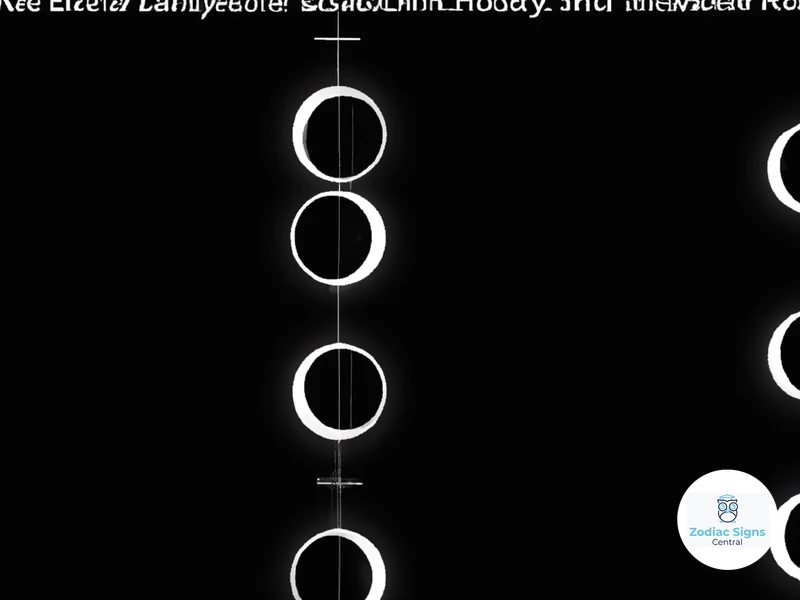
1. How long does each lunar phase last?
Each lunar phase typically lasts for about 3.5 days, although this can vary slightly. The transition from one phase to another occurs gradually as the Moon orbits the Earth.
2. Do lunar phases have an impact on our emotions?
Yes, lunar phases have a profound impact on our emotions. Just as the Moon affects the tides of the ocean, it also stirs our inner emotional tides. Different phases can bring about heightened sensitivity, introspection, or a burst of energy, influencing how we experience and express our emotions.
3. Can I see all lunar phases from any location on Earth?
Yes, you can see all lunar phases from any location on Earth. However, the visibility of certain phases may depend on your geographical location and atmospheric conditions. In some regions, certain phases may appear more prominently than others.
4. Are lunar phases the same worldwide?
Yes, lunar phases are the same worldwide. Regardless of where you are on Earth, the Moon goes through the same phases. However, the specific time at which each phase occurs may vary slightly based on your time zone.
5. Can I calculate the lunar phase for a specific date?
Yes, you can calculate the lunar phase for any specific date. There are numerous online resources, apps, and calendars available that provide the exact lunar phase for a given date. These tools can help you plan and align your activities with the energy of the Moon.
6. Do all cultures around the world have beliefs about lunar phases?
Yes, many cultures around the world have traditional beliefs and rituals associated with lunar phases. From ancient civilizations to modern-day spiritual practices, lunar phases hold a sacred place in various cultures, symbolizing fertility, transformation, and the cyclical nature of life.
7. Can lunar phases affect sleep patterns?
Yes, lunar phases can affect sleep patterns. During the Full Moon, some individuals may experience difficulty sleeping or have more vivid dreams. The intensified energy of this phase can stimulate heightened alertness or restlessness, making it important to practice good sleep hygiene during such periods.
8. Are there any astrological events that coincide with lunar phases?
Absolutely! Astrological events such as eclipses often occur during specific lunar phases. These events infuse the energy of the Moon with the transformative power of astrological alignments, creating potent energies that can shift our lives and experiences in profound ways.
9. Can I use lunar phases to enhance my manifestation practices?
Yes, lunar phases can be a powerful tool to enhance manifestation practices. Each phase carries a unique energy that can support different intentions and manifestations. For example, the Waxing Crescent is a great time to set intentions, while the Full Moon is ideal for releasing what no longer serves you.
10. Are lunar phases important in gardening practices?
Yes, lunar phases play a significant role in gardening practices. Gardeners often use the lunar calendar to determine the best time for planting, pruning, and harvesting plants. Different lunar phases are believed to influence the growth, development, and overall health of plants.
References
- Phases, Eclipses & Supermoons – Moon: NASA Science
- Phases of the moon, facts and information
- What is the moon phase today? Lunar phases 2023
Frequently Asked Questions

1. How do lunar phases impact astrology?
Lunar phases have a significant influence on astrology as they symbolize different energies and emotions that can affect our moods and behaviors. Understanding lunar phases can help astrologers make more accurate predictions and provide insights into the different aspects of our lives.
2. Can lunar phases affect our emotions?
Yes, lunar phases can have a profound impact on our emotions. For example, during a full moon, emotions tend to be heightened, leading to increased sensitivity and intensity. On the other hand, during a new moon, emotions may feel more introspective and calm.
3. How can I interpret lunar phases in my monthly astrology forecast?
Interpreting lunar phases in your monthly forecast involves analyzing the energy and symbolism associated with each phase and understanding how it relates to different areas of your life. By doing so, you can gain a deeper understanding of the influences at play during specific times of the month.
4. What is the significance of the New Moon?
The New Moon represents new beginnings and fresh starts. It is a time to set intentions and initiate new projects. This phase is associated with planting seeds for future growth and embarking on journeys of self-discovery.
5. How does the Waxing Crescent phase affect astrology?
The Waxing Crescent phase signifies growth and development. It is a time for nurturing ideas and plans, and for taking small steps towards progress. This phase promotes a sense of optimism and encourages you to move forward with your goals.
6. Why is the First Quarter phase significant in astrology?
The First Quarter phase is a period of challenges and decision-making. It often brings obstacles that require action and problem-solving. This phase encourages you to assess your progress and make necessary adjustments to stay aligned with your desired outcomes.
7. How does the Waxing Gibbous phase influence astrology?
During the Waxing Gibbous phase, energies are focused on refinement and fine-tuning. It is a time for analyzing and adjusting your plans to ensure they align with your intentions. This phase promotes attention to detail and persistence in pursuit of your goals.
8. What is the significance of the Full Moon in astrology?
The Full Moon represents completion, peak energy, and fulfillment. It is a time of heightened emotions, manifestation, and celebration. This phase brings clarity and illumination to areas of our lives that require attention or resolution.
9. How does the Waning Gibbous phase affect astrology?
The Waning Gibbous phase is a period of reflection and evaluation. It encourages us to review our progress, learn from our experiences, and let go of what no longer serves us. This phase promotes introspection and prepares us for the upcoming release during the next phase.
10. What is the significance of the Third Quarter phase in astrology?
The Third Quarter phase represents release and surrender. It is a time to let go of what is no longer needed or beneficial. This phase invites us to evaluate our priorities, make necessary adjustments, and find balance in preparation for the next lunar cycle.
References
- How to Use the Moon’s Eight Phases to Live Your Best Life
- Phases, Eclipses & Supermoons – Moon: NASA Science




